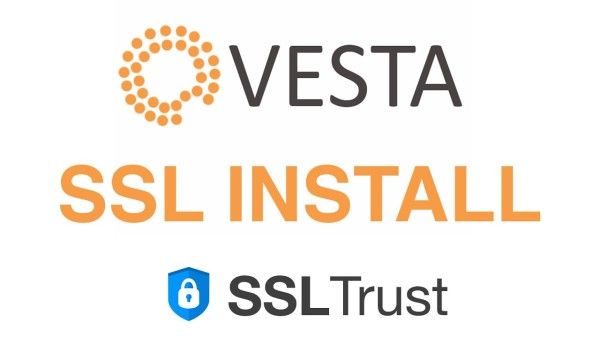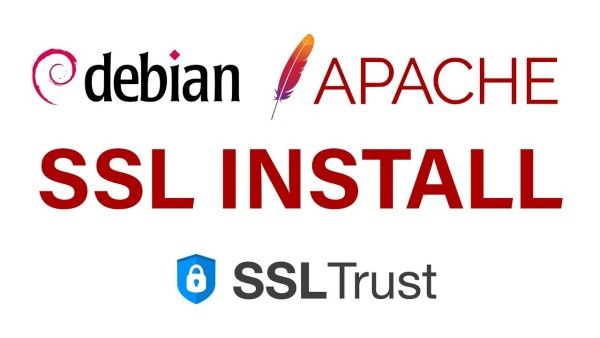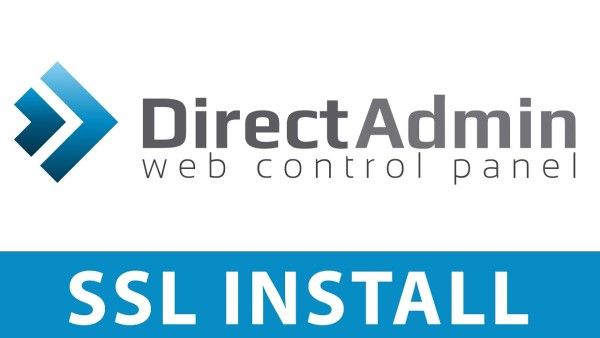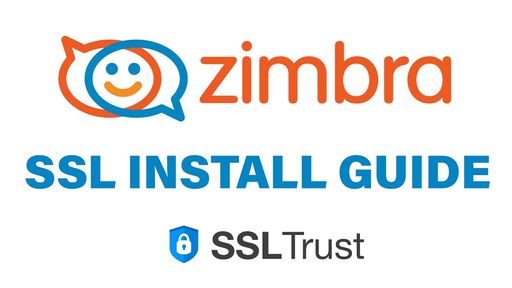
Zimbra Mail Server SSL Installation Video Guide
Step 1. Generating a CSR and Private Key
1: Head over to yourdomain.com:7071 and login to your Zimbra Mail Server's Admin Portal
2: In the main menu, click on Configure.
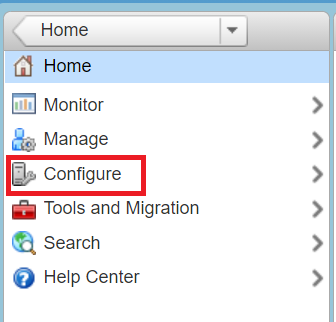
3: Select Certificates and then click on the gear icon on the top right (next to Help) and select Install Certificate.

4: Select your Target Server and click on Next
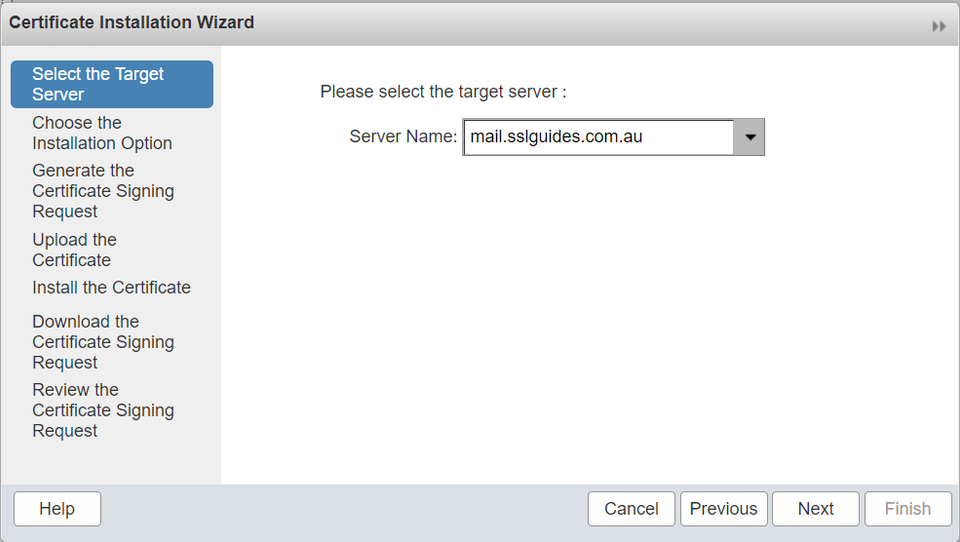
5: Choose the Generate CSR option and click on Next.
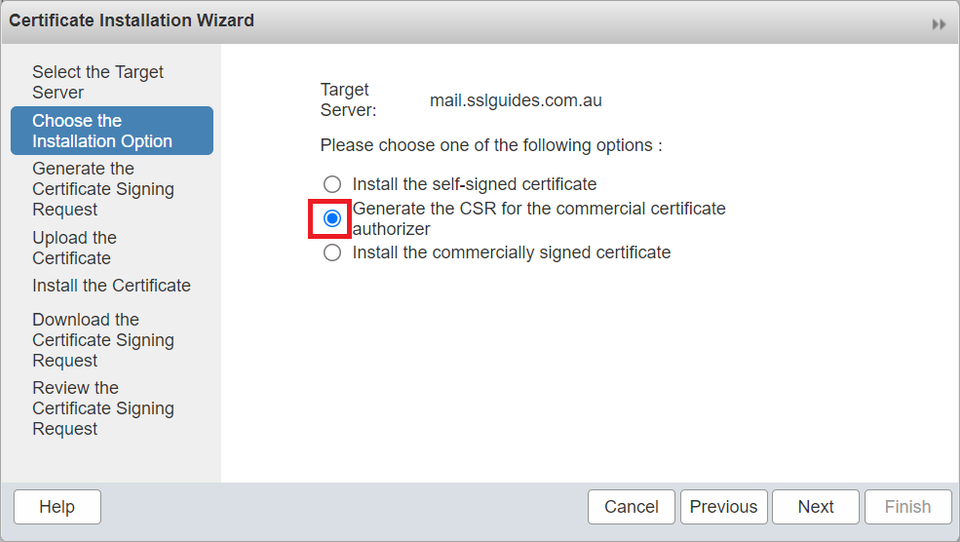
6: Fill in the CSR Details as specified below:-

Country Name (2 letter code) [AU]: Type in the 2 letter abbreviation for your country.
State or Province Name (full name) [Some-State]: Full name of the state
Organization Name (eg, company) [Internet Widgits Pty Ltd]:Locality Name (eg, city) []: Complete name of the city, no abbreviations
Organization Name (eg, company) [Internet Widgits Pty Ltd]: If you are a business; Enter your legal entity name. If you're not a business, any value entered will not be used in your certificate.
Organizational Unit Name (eg, section) []: If you are a business; Write the appropriate division of your company. It is best to use something generic such as "IT".
Common Name (e.g. server FQDN or YOUR name) []: Enter your domain name
Email Address []: Enter your email address
Now, select the required root length and click on Next to generate your CSR.
You will now see your newly generated Private Key and CSR. Make sure to store both in a safe location as you will need them for further SSL Configuration.
Step 2. Order and Configure the SSL Certificate
Now, we need to order an SSL Certificate. If you visit our SSL Certificates List page, you will see options available, such as a low-cost domain-validated SSL or a wildcard SSL, which also secures the sub-domains.
Cheap SSL Certificates
View our low cost SSL Certificates with domain validation.
Starting at $ per year
Business Certificates
View our Business Certificates to secure and verify your business.
Starting at $ per year
If you require any assistance with selecting an SSL Certificate, please feel free to contact our sales team and they will be happy to assist.
1: Order the SSL and complete the checkout.
2: Once you have completed the SSL Certificate Purchase you can begin the configuration process. This can be started by going into your SSLTrust account and managing your recent purchase.
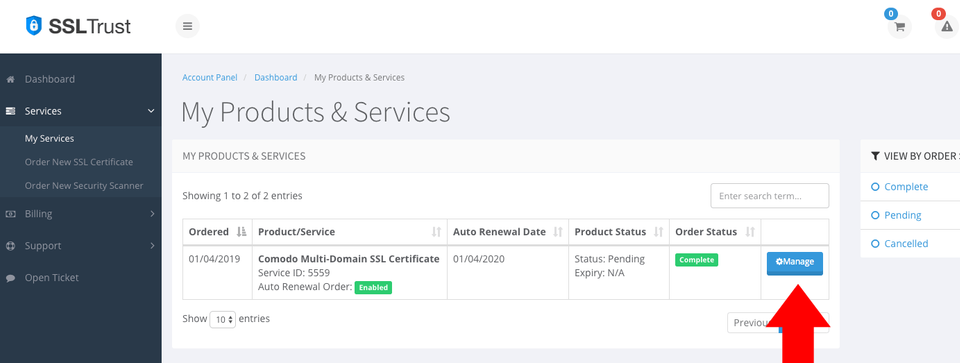
You then will need to click the Submit Configuration button to begin the configuration process.
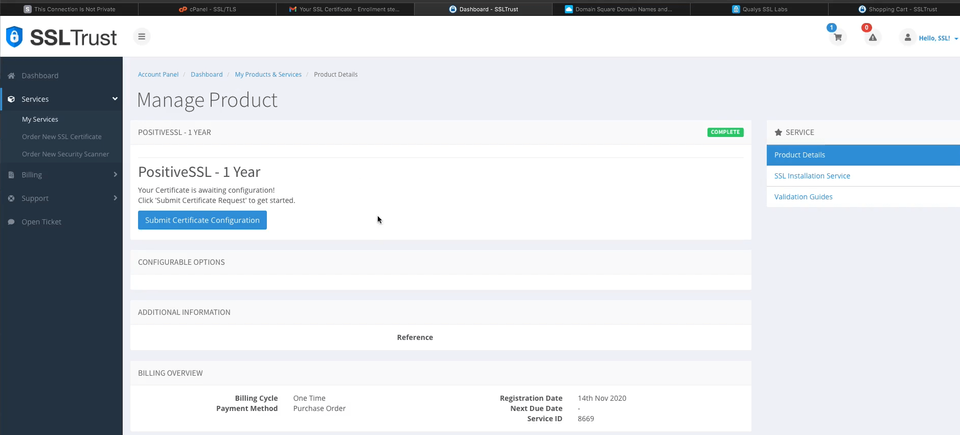
3: You now need to paste in the CSR you generated using the OpenSSL library in the Ubuntu CLI. This includes the lines:
text
-----BEGIN CERTIFICATE REQUEST---- -----END CERTIFICATE REQUEST-----
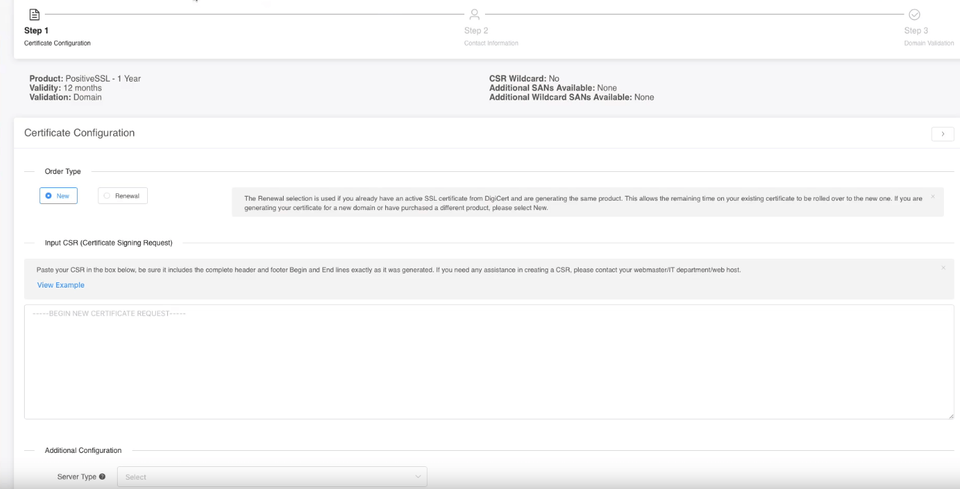
Select Other for your Web Server Type.
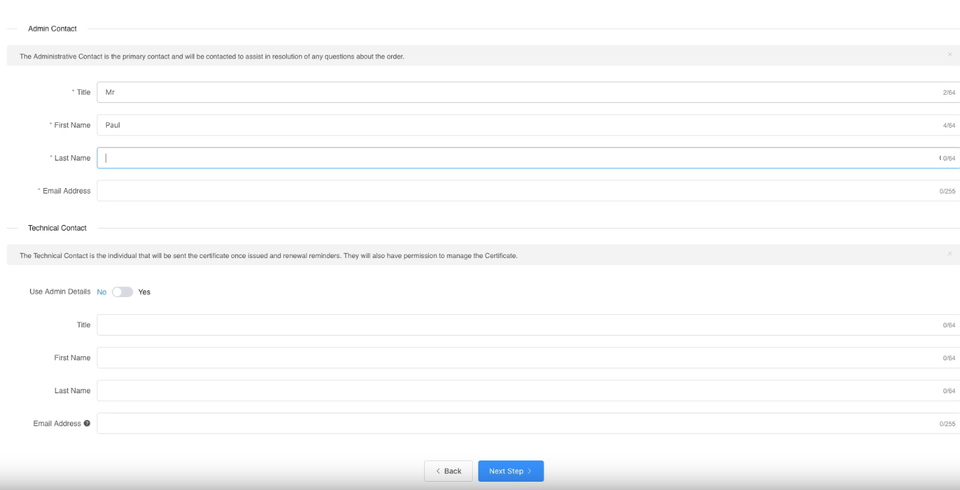
You will need to also enter the Site Administrator Contact Information.
This information is to be of the individual who is responsible to approve and SSL Certificate. If it is a business SSL, it needs to be a contact under the business.
The Technical Contact Information is the details of the individual responsible for the installation and management of the Certificate.
If you have ordered a business SSL, you will also be required to enter your business details. These should be the correct address and phone number and legal entity name. They will be required to be validated by the Certificate Authority, any mistakes will cause delays. More information on Business Validation can be found here.
4: Click Continue to go to the next Step. Here you need to select the Authentication Method to validate your domain name. This is required to prove you own the domain name and have permission to issue an SSL Certificate for the domain.
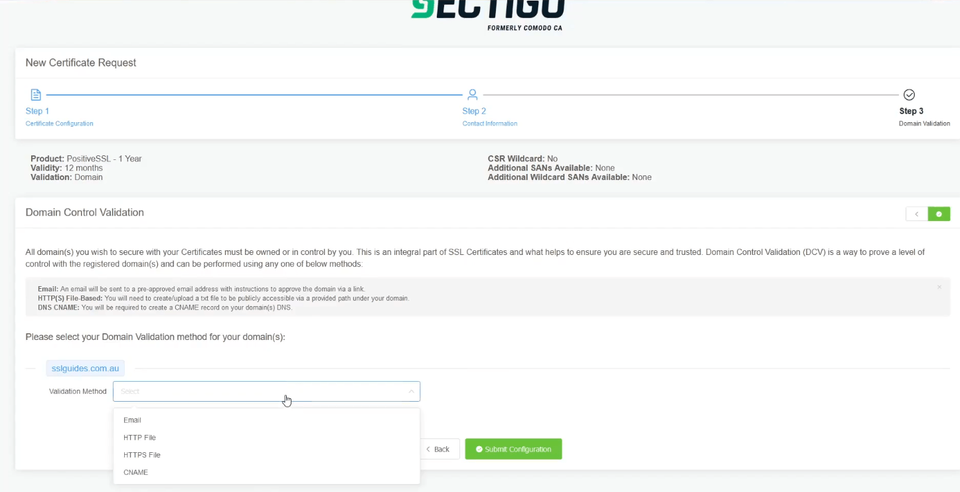
Select the method that will be the easiest for you to use; File-Based Authentication ( HTTP / HTTPS ), CNAME Based Authentication ( DNS ) or Certificate Approver Email.
If you have access to one of the listed emails, this can be the quickest method
Click Continue/Submit to finish the Configuration process.
After you complete the domain validation via your selected method, your SSL will be issued. If you ordered a Business SSL, you will need to wait for the Certificate Authority to complete the Business address and phone validation. If the validation has not progressed, or you have not received your Certificate after some time, please contact our support team so we can check on its status.
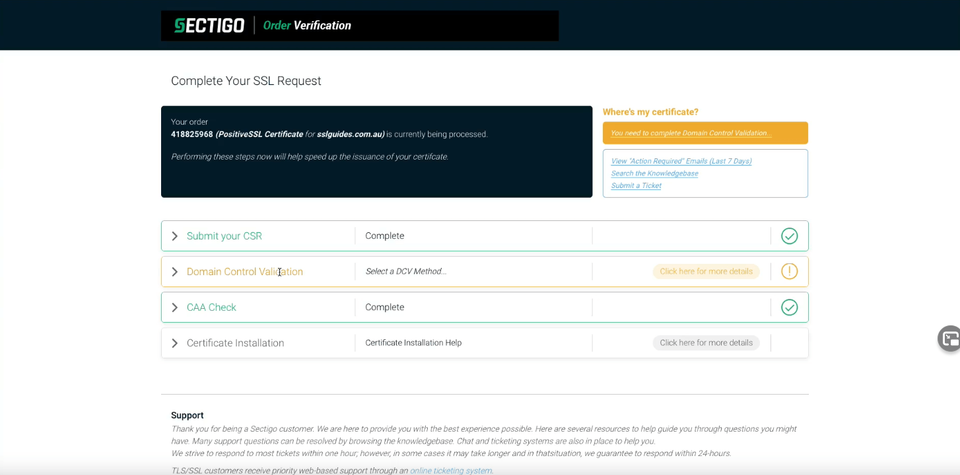
Step 3: Select the Target Server & Install the SSL Certificate
When your SSL Certificate has been issued, you will be emailed the Certificate Directly from the Certificate Authority. You can also download it from your SSLTrust Portal. Downloading it from the SSLTrust Portal is a good option as we format the certificate in an easy to use way.
Again; View your certificate management page within SSLTrust
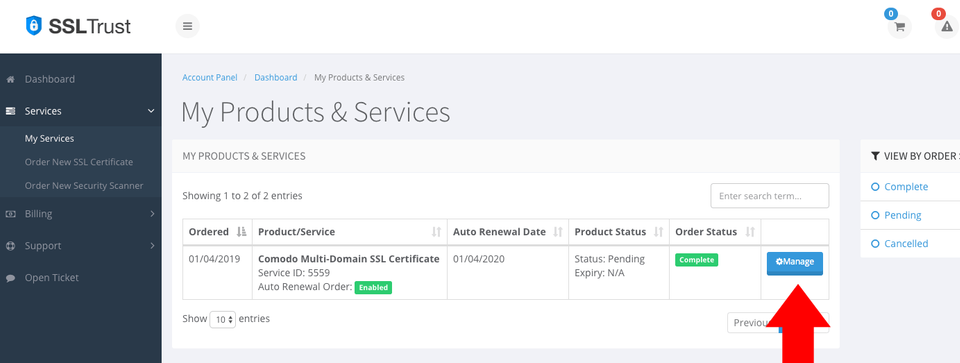
1: Click on the Manage button and collect/download your certificate.
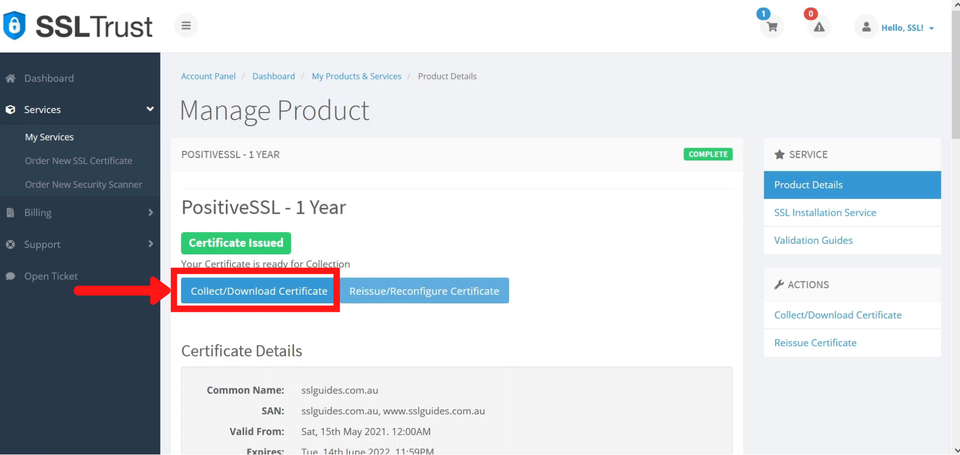
2: Select the format as individual files with either a .pem or .cer extension and click on Download Certificate.

3: Go back to the Zimbra SSL Installation dialog box and again choose the Installation option as Install the commercially signed certificate
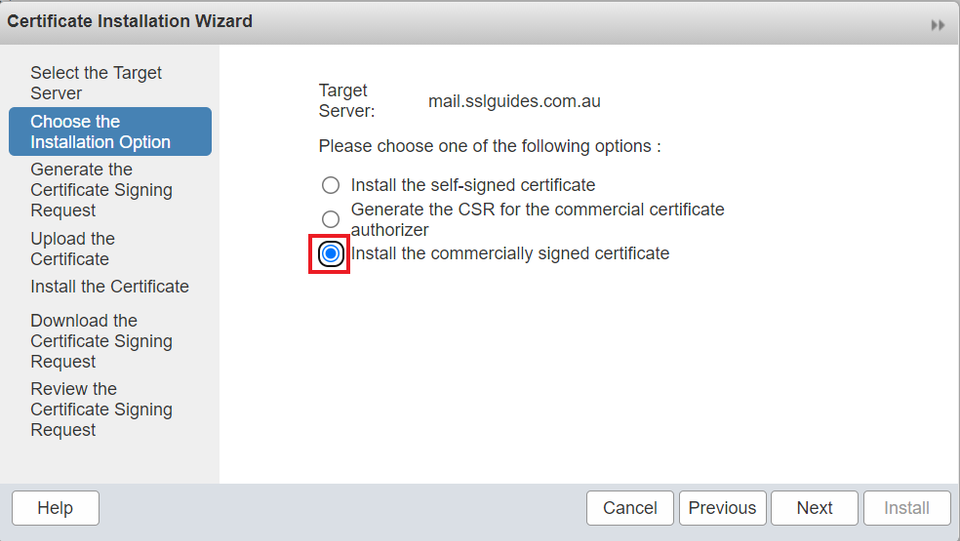
4: Review the CSR which you generated and click on Next.
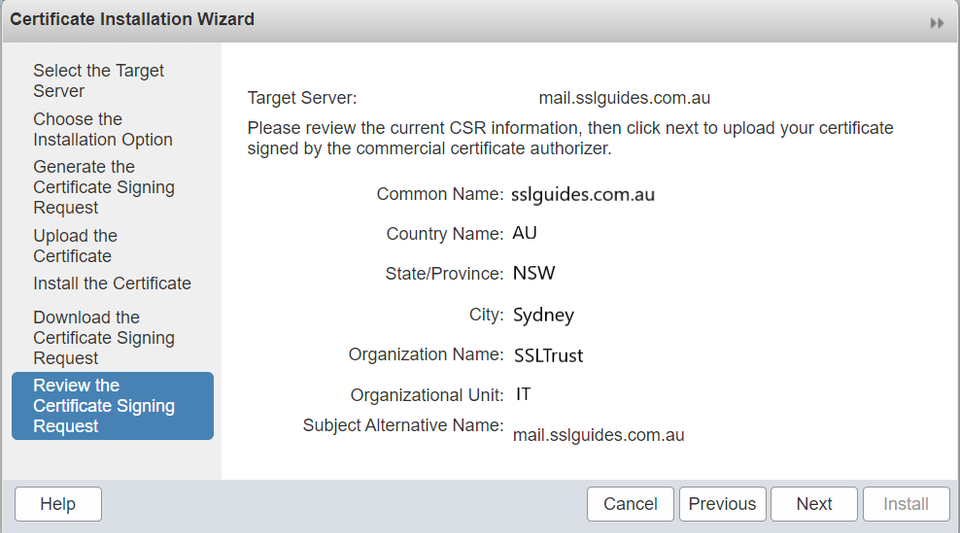
5: Upload the certificate files to your server and click on Install
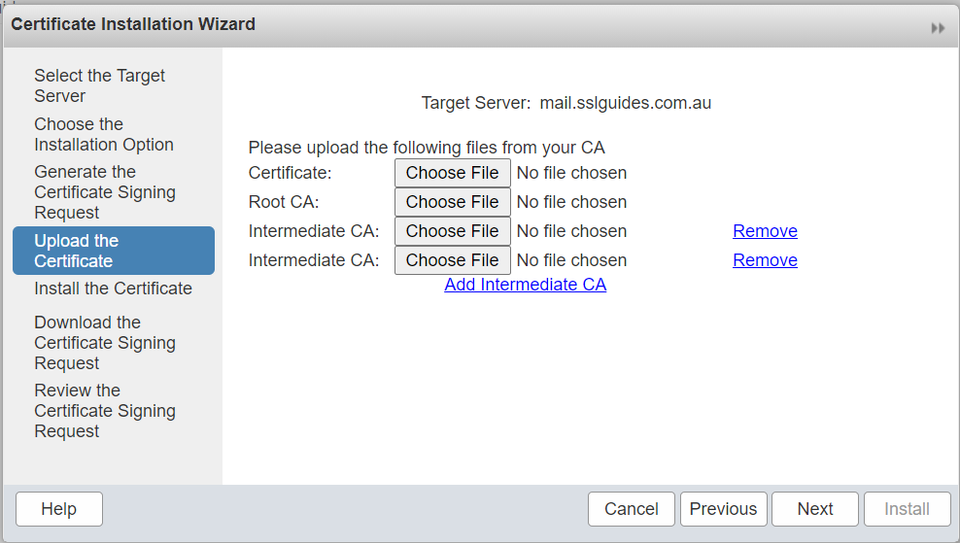
Note:- If you get this error (error : system failure: exception executing command: zmcertmgr verifycrtchain).
This means that Zimbra was not able to automatically verify and deploy your certificates and you will have to do it manually.
To get rid of this error, simply execute the following steps:-
1: Create a certificate chain:-
You can do this 2 ways:-
a: Copy and paste the main certificate file, the intermediate files and the root certificate into one file and upload it to your server.
OR
b: Run the following command.
shell
cat path-to-certificate.crt path-to-intermediate-certificate/s.crt path-to-root-certificate.crt > path-to-chain-certificate.crt
Make sure to replace the command with appropriate paths. You can set a new output directory as a path for the chain certificate.
2: Verify the certificates:
shell
/opt/zimbra/bin/zmcertmgr verifycrt comm path-to-private-key.key path-to-certificate.crt path-to-certificate-chain.crt
Generally, the command should look like this-
/opt/zimbra/bin/zmcertmgr verifycrt comm /opt/zimbra/ssl/zimbra/commercial/commercial.key /tmp/commercial.crt /tmp/ca_chain.crt
3: Deploy the Certificates
shell
/opt/zimbra/bin/zmcertmgr deploycrt comm path-to-certificate.crt path-to-certificate-chain.crt
4: To finish, verify the certificate was deployed.
shell
/opt/zimbra/bin/zmcertmgr viewdeployedcrt
Step 4: Restart your Server via the CLI
Once you've successfully uploaded the certificate files to your server and installed the certificate, it is now time to restart the server. To do so,
you will have to get root access to your server via SSH and execute the following commands:-
shell
sudo su su zimbra zmcontrol restart
That is it, you have successfully installed an SSL Certificate on your Zimbra Mail Server.
Step 5. Check the SSL is working
SSLTrust's Free SSL Checker is a tool that allows you to test and validate the SSL/TLS certificates installed on websites. Simply enter a domain name and it will analyze the certificate, providing details like the issuer, expiration date, encryption strength, and whether the certificate is properly configured and trusted by major browsers and operating systems. In SSL tests, receiving an "A" rating typically signifies that the SSL certificate and its configuration meet high security standards.
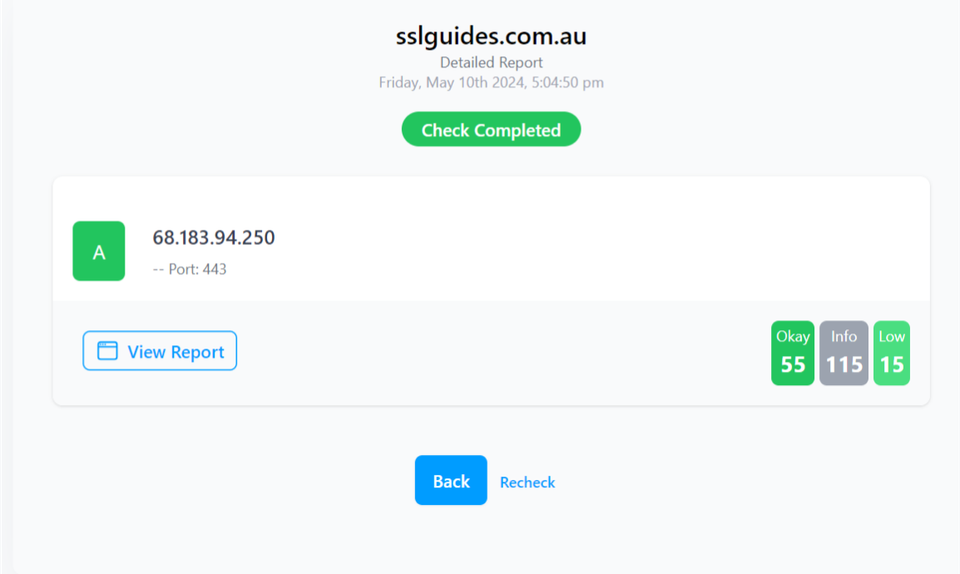
The checker highlights any potential security issues or misconfigurations with the SSL implementation. This free tool makes it easy to verify if a website's SSL certificate is valid and secure, giving visitors confidence their connection is encrypted and their data is protected from eavesdroppers.
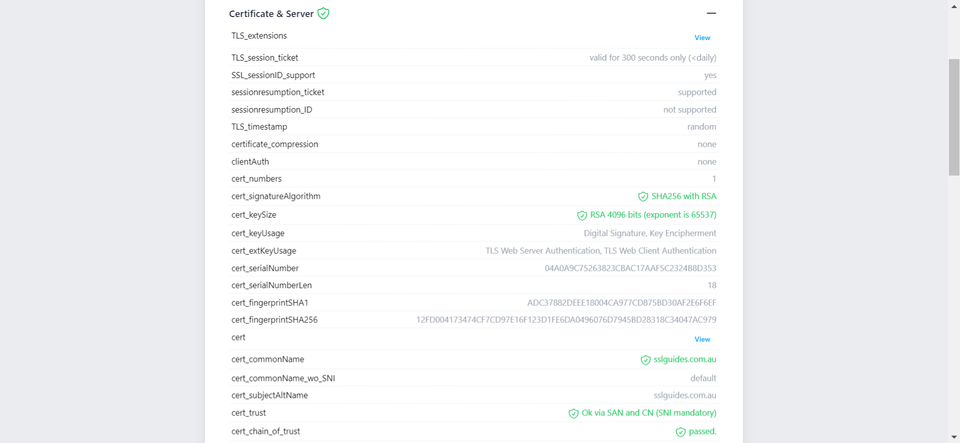
Additionally, you can also performed a detailed check which generates an actionable report with all the ins and out of your SSL Certificate. This includes Protocols, Ciphers, Vulnerabilities and much more.
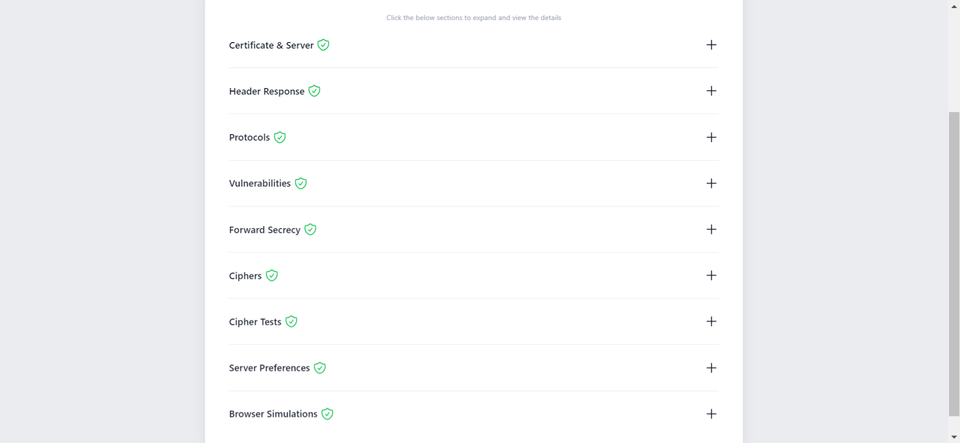
-
You might require assistance from your web developer or make the necessary updates to your website personally to ensure that all files utilize "https://" and all links leading to and within your website employ "https://".
Further Configuration
1: Turn of older versions of TLS:-
shell
su zimbra zmprov mcf -zimbraReverseProxySSLProtocols TLSv1 zmprov mcf -zimbraReverseProxySSLProtocols TLSv1.1 zmcontrol restart
Discussions and Comments
Click here to view and join in on any discussions and comments on this article.


